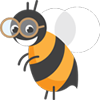How to treat the flu
Nov 07, 17
Does your child have a high fever, headache, sore throat and runny, stuffy nose? These are some symptoms of influenza (flu), a common respiratory infection that affects the nose, throat and lungs. Read about how to prevent and treat the flu, which occurs more often in the fall and winter months.
How to treat the flu
Most people who get the flu will only have a mild infection and can be treated at home. If your child has the flu, it is important to keep them hydrated and have them drink small amounts of fluids frequently.
If your child has a fever or aches and pains, give them acetaminophen (Tylenol) or ibuprofen (Advil or Motrin). Children who are younger than six years old should not take cough medicine. Children younger than 16 years old should not receive ASA (acetylsalicylic acid or Aspirin). You can also try using a heating pad to alleviate muscle pain, saline drops to help clear a stuffy nose, or gargling with warm water. Symptoms typically take between two to seven days to go away, but a cough and weakness can persist for up to six weeks.
How to avoid contracting and spreading the flu
The flu is easily spread through coughing, sneezing, and contact with items and surfaces that a person with the flu has touched. To prevent yourself from getting the flu, make sure to maintain good handwashing practices. Avoid touching your face, as the flu virus can make its way into the body through the eyes, nose and mouth. Teach your child to cough and sneeze into their arm or sleeve, instead of their hands. Keep the surfaces in your home that people regularly come into contact with clean. This includes kitchen and bathroom counters, doors,
and phones.
The flu vaccine, which is offered for free in doctors’ offices, clinics and pharmacies, is the best way to prevent your child from contracting the flu. Children can begin getting the flu vaccine after they are six months old.
Visit AboutKidsHealth to learn more about the flu, and how to treat it!


 1155 Notre Dame Ave.
1155 Notre Dame Ave. Monday to Friday:
Monday to Friday: (204) 452-4311
(204) 452-4311



















